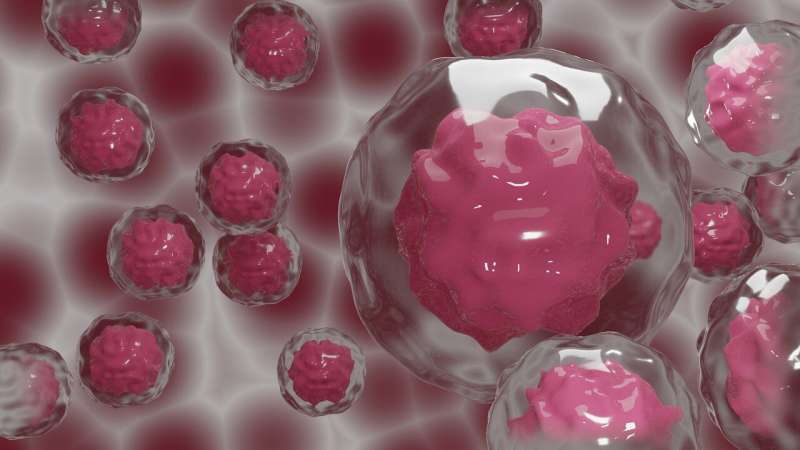
A small drug molecule that appears to protect normal tissue from the damaging effects of radiation, may simultaneously be able to boost the cancer-killing effect of radiation therapy, according to a new study led by scientists at University of Iowa, University of Texas Southwestern Medical Center, and Galera Therapeutics, Inc.
The study, published online May 12 in Science Translational Medicine, suggests that the drug’s dual effect is based on a fundamental difference between the ability of cancer cells and healthy cells to withstand the damaging effects of a highly reactive molecule called hydrogen peroxide, which is produced during the dismutation of superoxide.
The drug, known as Avasopasem manganese, is made by Galera Therapeutics. It acts like a natural enzyme called superoxide dismutase and converts superoxide into hydrogen peroxide. Based on its ability to “mop up” damaging superoxide molecules, which are produced by radiation treatment, the drug is currently in clinical trials to test its ability to protect mucosal tissue from the side-effect of radiotherapy.
Since radiation generates large amounts of superoxide, combining the drug with radiation therapy can generate high levels of hydrogen peroxide. This does not harm normal tissue because healthy cells have metabolic systems that remove hydrogen peroxide. In contrast, cancer cells, which are biologically abnormal, can be overwhelmed by high levels of hydrogen peroxide.
“Cancer cells and healthy cells respond very differently to the increased amount of hydrogen peroxide,” says Douglas Spitz, Ph.D., UI professor of radiation oncology and co-lead author of the study. “Our study shows that Avasopasem manganese interacts synergistically with high doses of radiation to create hydrogen peroxide that selectively kill cancer cells but is relatively harmless to normal tissue.”
The study showed that in mouse models of lung and pancreatic cancer the drug synergized with radiotherapy to such an extent that the treatment was able to destroy the tumors. The study also showed the greatest synergy occurred with high daily dose radiotherapy, similar to the doses delivered with Stereotactic Body Radiation Therapy (SBRT) currently used to treat some patients with cancer.
The researchers used several experiments to confirm that hydrogen peroxide was the key component in the synergistic effect. They showed the effect was blocked by adding in an enzyme that removes hydrogen peroxide and was enhanced when hydrogen peroxide breakdown was prevented.
Source: Read Full Article
